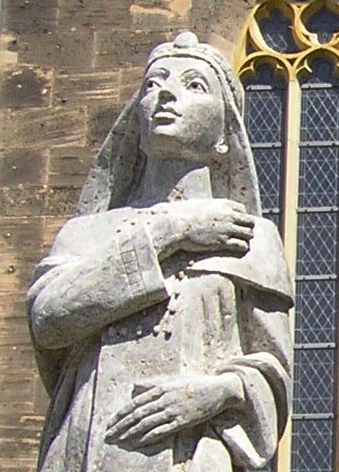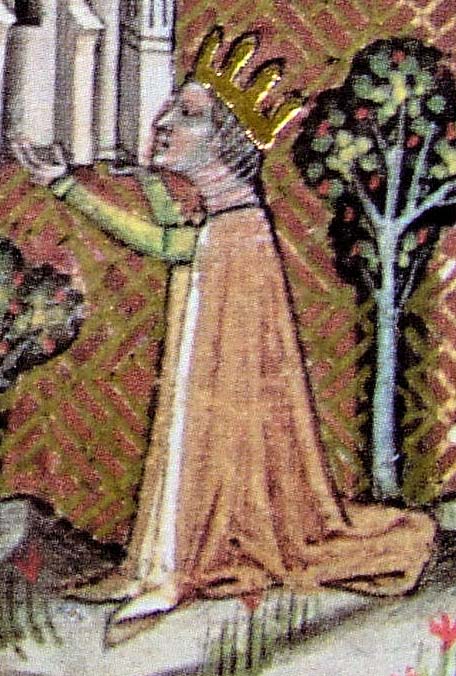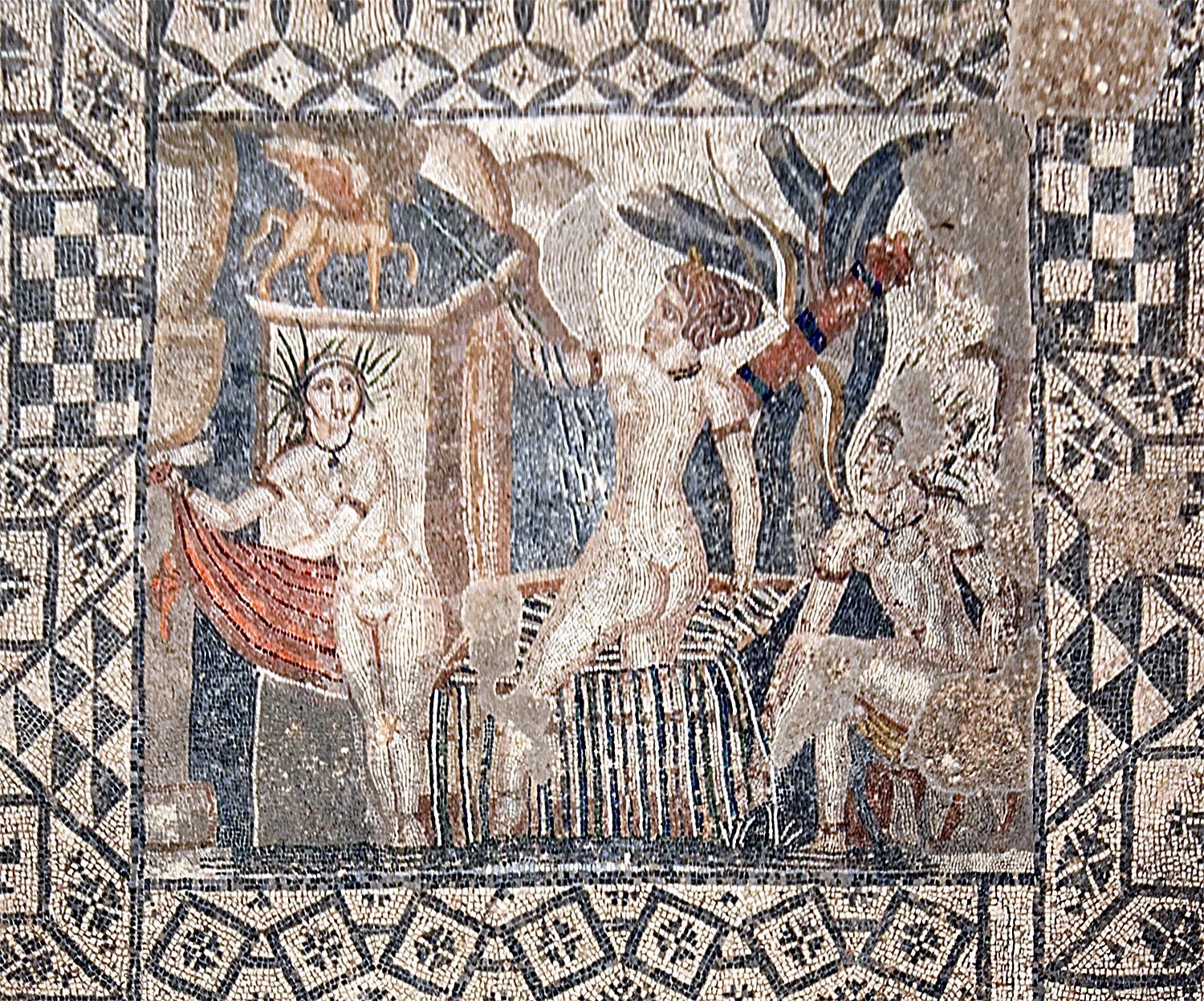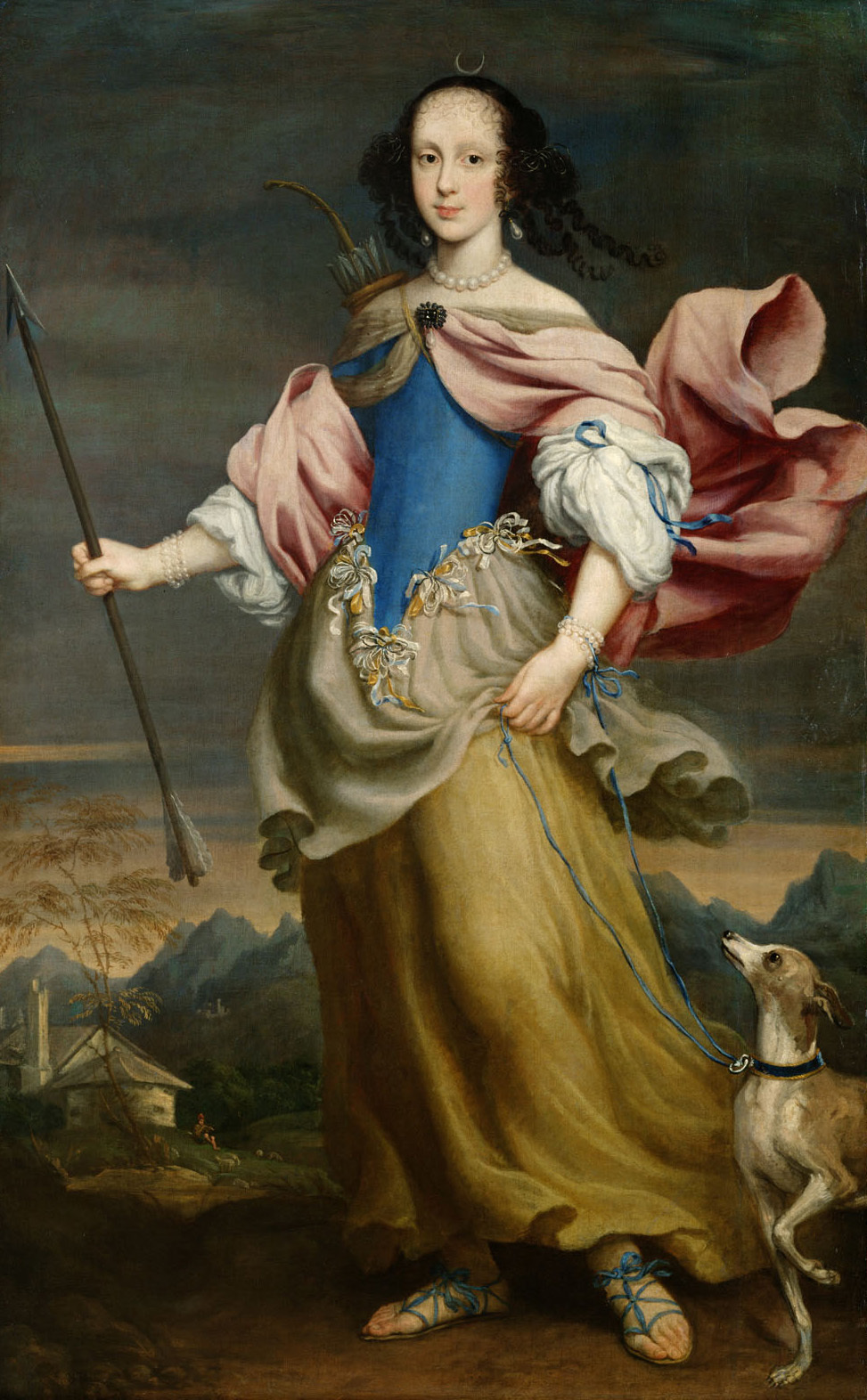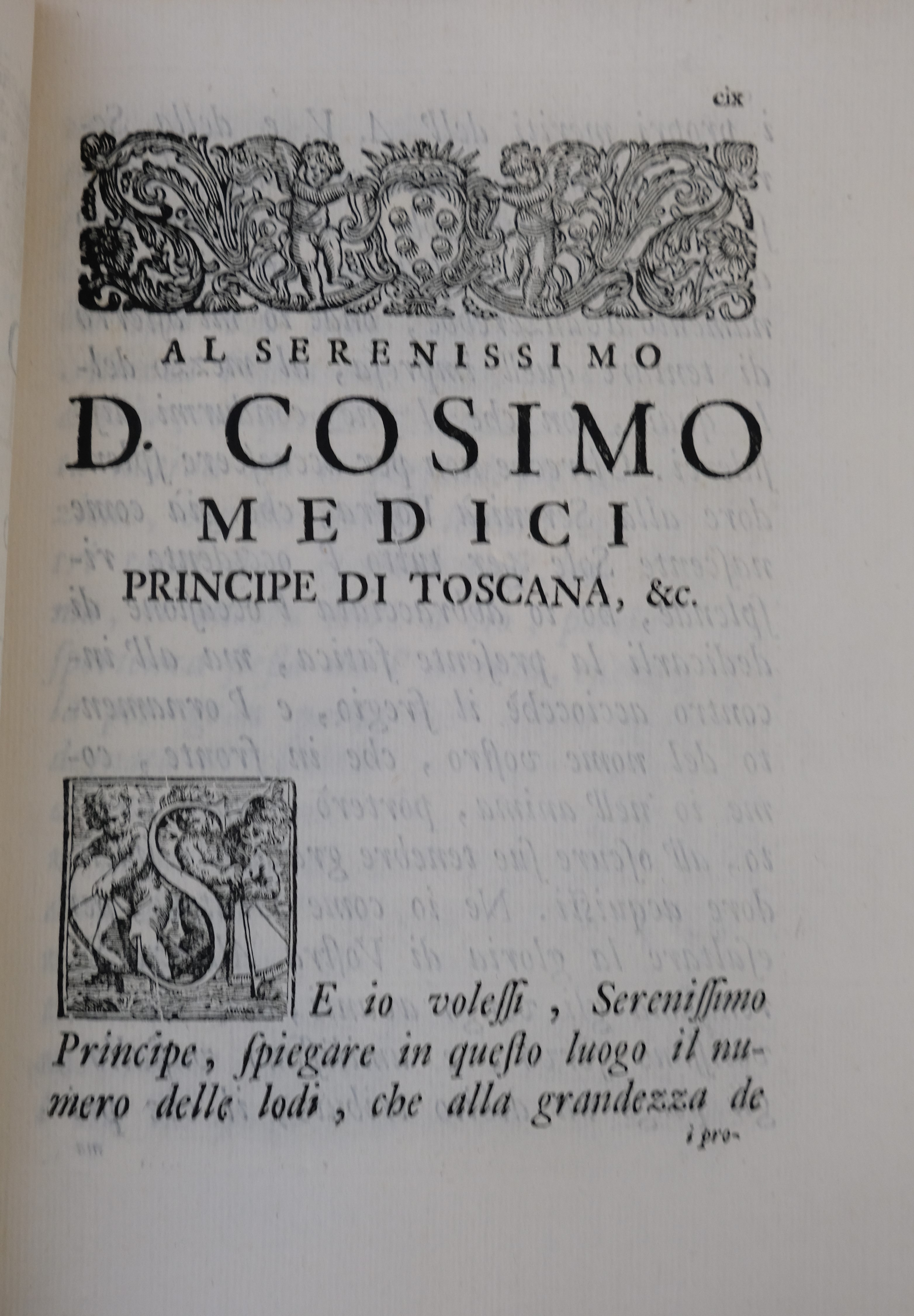|
Claudia Felicitas Of Austria
Claudia Felicitas of Austria (30 May 1653 – 8 April 1676) was by birth an Archduchess of Austria and by marriage Holy Roman Empress, German Queen, Archduchess consort of Austria, Queen consort of Hungary and Bohemia as the second wife of Leopold I. A member of the Third Order of Saint Dominic, she had a beautiful singing voice and composed music, and also was passionately fond of hunting. Claudia Felicitas had a great influence on her husband; thanks to her, all her political opponents were removed from court. She also struggled with the abuse of the executive and judicial systems. During her 3-year-long marriage, she gave birth to two children who died in infancy; she died after the birth of her second child. The Tyrolean branch of the House of Habsburg became extinct upon her death. Life Early years Claudia Felicitas was born in Innsbruck on 30 May 1653.Korotin 2016, p. 509.Czeike 1992, p. 508. She was the first child and eldest daughter of Ferdinand Charles, Archduke of ... [...More Info...] [...Related Items...] OR: [Wikipedia] [Google] [Baidu] |
Holy Roman Empress
The Holy Roman Empress or Empress of the Holy Roman Empire (''Kaiserin des Heiligen Römischen Reiches'') was the wife or widow of the Holy Roman Emperor. The elective dignity of Holy Roman emperor was restricted to males only, but some empresses, such as Theophanu and Maria Theresa, were '' de facto'' rulers of the Empire. Holy Roman Empresses Before 924, the title of emperor was not always associated with the German kingdom; rather, it was initially associated with the Carolingian dynasty, and then possessed by several other figures of the 9th and 10th centuries. Their wives were thus empresses, but not necessarily German queens. Carolingian Holy Roman Empresses/Queens of Germany With the elevation of Otto I of Germany in 962 to the Imperial title, the title of Roman King or Emperor became inalienably associated with the Kingdom of Germany - although a King of Germany might not bear the title of Emperor, it would be impossible to become a Holy Roman Emperor without being K ... [...More Info...] [...Related Items...] OR: [Wikipedia] [Google] [Baidu] |
Queen Consort Of Hungary
This is a list of the queens consorts of Hungary (), the consorts of the King of Hungary, kings of Hungary. After the extinction of the Árpád dynasty and later the Capetian House of Anjou, Angevin dynasty, the title of King of Hungary has been held by a monarch outside of Hungary with a few exceptions. After 1526, the title of Queen of Hungary belonged to the wife of the Habsburg monarchy, Habsburg Emperors who were also King of Hungary. Queens of Hungary also held the titles after 1526: Holy Roman Empress (later Empress of Austria) and List of Bohemian consorts, Queen consort of Bohemia. Since Leopold I, Holy Roman Emperor, Leopold I, all kings of Hungary used the title of Apostolic King of Hungary the title given to Stephen I of Hungary, Saint Stephen I by the Pope and their wives were styled as Apostolic Queens of Hungary. The title lasted just a little over nine centuries, from 1000 to 1918. The Kingdom of Hungary also had two queen regnant, queens regnant (''királynő'') ... [...More Info...] [...Related Items...] OR: [Wikipedia] [Google] [Baidu] |
Further Austria
Further Austria, Outer Austria or Anterior Austria (; , formerly ''die Vorlande'' (pl.)) was the collective name for the early (and later) possessions of the House of Habsburg in the former Swabian stem duchy of south-western Germany, including territories in the Alsace region west of the Rhine and in Vorarlberg. While the territories of Further Austria west of the Rhine and south of Lake Constance (except Konstanz itself) were gradually lost to France and the Swiss Confederacy, those in Swabia remained under Habsburg control until the Napoleonic Era, with Vorarlberg still forming a part of modern Austria. Geography Further Austria mainly comprised the Alsatian County of Ferrette in the Sundgau, including the town of Belfort, and the adjacent Breisgau region east of the Rhine, including Freiburg im Breisgau after 1368. Also ruled from the Habsburg residence in Ensisheim near Mühlhausen were numerous scattered territories stretching from Upper Swabia to the Allgäu region i ... [...More Info...] [...Related Items...] OR: [Wikipedia] [Google] [Baidu] |
Hunting
Hunting is the Human activity, human practice of seeking, pursuing, capturing, and killing wildlife or feral animals. The most common reasons for humans to hunt are to obtain the animal's body for meat and useful animal products (fur/hide (skin), hide, bone/tusks, horn (anatomy), horn/antler, etc.), for recreation/taxidermy (see trophy hunting), although it may also be done for resourceful reasons such as removing predators dangerous to humans or domestic animals (e.g. wolf hunting), to pest control, eliminate pest (organism), pests and nuisance animals that damage crops/livestock/poultry or zoonosis, spread diseases (see varmint hunting, varminting), for trade/tourism (see safari), or for conservation biology, ecological conservation against overpopulation and invasive species (commonly called a culling#Wildlife, cull). Recreationally hunted species are generally referred to as the ''game (food), game'', and are usually mammals and birds. A person participating in a hunt is a ... [...More Info...] [...Related Items...] OR: [Wikipedia] [Google] [Baidu] |
Diana (mythology)
Diana is a goddess in Religion in ancient Rome, Roman religion, primarily considered a patroness of the countryside and nature, hunters, wildlife, childbirth, crossroads, the night, and the Moon. She is Syncretism, equated with the Greek mythology, Greek goddess Artemis, and absorbed much of Artemis' mythology early in Roman history, including a birth on the island of Delos to parents Jupiter (mythology), Jupiter and Latona, and a twin brother, Apollo,''Larousse Desk Reference Encyclopedia'', The Book People, Haydock, 1995, p. 215. though she had Diana Nemorensis, an independent origin in Italy. Diana is considered a virgin goddess and protector of childbirth. Historically, Diana made up a triad with two other Roman deities: Egeria (mythology), Egeria the water nymph, her servant and assistant midwife; and Virbius, the woodland god. Diana is revered in modern Modern paganism, neopagan religions including Reconstructionist Roman religion, Roman neopaganism, Stregheria, and Wic ... [...More Info...] [...Related Items...] OR: [Wikipedia] [Google] [Baidu] |
Giovanni Maria Morandi
Giovanni Maria Morandi (30 April 1622 – 18 February 1717) was an Italian Baroque painter, known for altarpieces and portraits. Biography He was born in Florence. He studied art with Orazio Fidani and Giovanni Bilivert. Very few works date from this period, although a painting of Christ at the (demolished) is mentioned by Raffaelo Del Bruno in his guide book to Florence (1757). He probably left there sometime in the late 1640s or early 1650s. Most of his career was spent in Rome, where he painted numerous altarpieces, including the '' Death of Mary'' in the church of Santa Maria della Pace (1664). He also worked at Santa Maria in Vallicella, where he depicted the Pentecost, Santa Maria del Popolo, where he painted a '' Visitation'', and Santa Maria dell'Anima, where he created a ''Visitation'' and a '' Marriage of the Virgin''. In addition, he painted murals on mythological subjects at the Palazzo Salviati in Trastevere. He became a member of the Accademia di San Luca ... [...More Info...] [...Related Items...] OR: [Wikipedia] [Google] [Baidu] |
Baroque
The Baroque ( , , ) is a Western Style (visual arts), style of Baroque architecture, architecture, Baroque music, music, Baroque dance, dance, Baroque painting, painting, Baroque sculpture, sculpture, poetry, and other arts that flourished from the early 17th century until the 1750s. It followed Renaissance art and Mannerism and preceded the Rococo (in the past often referred to as "late Baroque") and Neoclassicism, Neoclassical styles. It was encouraged by the Catholic Church as a means to counter the simplicity and austerity of Protestant architecture, art, and music, though Lutheran art#Baroque period, Lutheran Baroque art developed in parts of Europe as well. The Baroque style used contrast, movement, exuberant detail, deep color, grandeur, and surprise to achieve a sense of awe. The style began at the start of the 17th century in Rome, then spread rapidly to the rest of Italy, France, Spain, and Portugal, then to Austria, southern Germany, Poland and Russia. By the 1730s, i ... [...More Info...] [...Related Items...] OR: [Wikipedia] [Google] [Baidu] |
Hedwig Of The Palatinate-Sulzbach
Marie Hedwig Auguste of Sulzbach (; born: 15 April 1650 in Sulzbach; died: 23 November 1681 in Hamburg) was a Countess Palatine of Sulzbach by birth and by marriage, Archduchess of Austria and by her second marriage, Duchess of Saxe-Lauenburg The Duchy of Saxe-Lauenburg (, ), was a ''reichsfrei'' duchy that existed from 1296 to 1803 and again from 1814 to 1876 in the extreme southeast region of what is now Schleswig-Holstein. Its territorial centre was in the modern district of Herz .... Early life Hedwig was a daughter of the Duke and Count Palatine Christian August, Count Palatine of Sulzbach, Christian August of Sulzbach (1622–1708) from his marriage to Countess Amalie of Nassau-Siegen (1613–1669), daughter of Count John VII, Count of Nassau-Siegen, John VII of Nassau-Siegen. First marriage She was married on 3 June 1665 Proxy marriage, per cura in the court chapel of Sulzbach to Archduke Sigismund Francis, Archduke of Austria, Sigismund Francis of Austria-Tyrol ( ... [...More Info...] [...Related Items...] OR: [Wikipedia] [Google] [Baidu] |
Proxy Marriage
A proxy wedding or proxy marriage is a wedding in which one or both of the individuals being united are not physically present, usually being represented instead by other persons (proxies). If both partners are absent, this is known as a double proxy wedding. Marriage by proxy is usually resorted to in one of two situations: either a couple wish to marry but one or both partners cannot attend (for reasons such as military service, imprisonment, or travel restrictions); or a couple lives in a jurisdiction in which they cannot legally marry. In most jurisdictions, the law requires that both parties to a marriage be physically present: proxy weddings are not recognized as legally binding. Under the English common law, however, if a proxy marriage is valid under the law of the place where the marriage was celebrated (the ''lex loci celebrationis'') then it will be recognised as valid in England and Wales. History Early Modern Starting in the Middle Ages, European monarchs and n ... [...More Info...] [...Related Items...] OR: [Wikipedia] [Google] [Baidu] |
Sigismund Francis, Archduke Of Austria
Sigismund Francis, Archduke of Further Austria (27 November 1630 – 25 June 1665) was the ruler of Further Austria including Tyrol from 1662 to 1665. Biography He was born at Innsbruck, the second son of Leopold V, Archduke of Austria and Claudia de' Medici. He was appointed as Prince-bishop of Augsburg in 1646. In 1653, he became bishop of Gurk and in 1659 Prince-bishop of Trent. He was never ordained as a priest or consecrated as a bishop. In 1662 he was put forth by his cousin Leopold I, Holy Roman Emperor as a candidate for bishop of Strasbourg. This included large cash incentives to the cathedral chapter and a promise that Sigismund would be a very hands off ruler. After the 1662 death of his brother Archduke Ferdinand Charles of Austria, he became Archduke of Further Austria, and therefore withdrew from the candidacy for the bishopric. He was more able than his brother and could have made him a good ruler, but with his early death in 1665, the younger Tyrolean li ... [...More Info...] [...Related Items...] OR: [Wikipedia] [Google] [Baidu] |
Archduchess Maria Maddalena Of Austria
Maria Maddalena of Austria (, ; 7 October 1589 – 1 November 1631) was Grand Duchess of Tuscany by her marriage to Cosimo II in 1609 until his death in 1621. With him, she had eight children, including a duchess of Parma, a grand duke of Tuscany, and an archduchess of Further Austria. Born in Graz, Maria Magdalena was the youngest daughter of Charles II, Archduke of Inner Austria, and his wife Maria Anna of Bavaria. During the minority of her son, Grand Duke Ferdinando, she and her mother-in-law acted as regents from 1621 to 1628. She died on 1 November 1631 in Passau. Grand Duchess consort of Tuscany In 1608, the 19-year-old Maria Magdalena was married to Cosimo de' Medici, Grand Prince of Tuscany. Cosimo's father, Ferdinando I de' Medici, Grand Duke of Tuscany, arranged the marriage in order to assuage Spain's (where Maria Magdalena's sister was the incumbent queen) animosity towards Tuscany, which had been inflamed due to a string of Franco-Tuscan marriages. From the ... [...More Info...] [...Related Items...] OR: [Wikipedia] [Google] [Baidu] |
Cosimo II De' Medici, Grand Duke Of Tuscany
Cosimo II de' Medici (12 May 1590 – 28 February 1621) was Grand Duke of Tuscany from 1609 until his death. He was the elder son of Ferdinando I de' Medici, Grand Duke of Tuscany, and Christina of Lorraine. For the majority of his 12-year reign, he delegated the administration of Tuscany to his ministers. He is best remembered as the patron of Galileo Galilei, his childhood tutor. Biography Cosimo's father Ferdinando I took care to provide him with a modern education. Indeed, Galileo Galilei was Cosimo's tutor between 1605 and 1608. Ferdinando arranged for him to marry Archduchess Maria Maddalena of Austria, daughter of Archduke Charles II, in 1608. Their marriage was celebrated with an elaborate display on the Arno, which included a performance of the ''Argonautica'', in which Jason sailed around an artificial island and presented Maria Maddalena with six red apples, alluding to the Medici family symbolic balls, or palle. Cosimo and Maria Maddalena had eight children in ... [...More Info...] [...Related Items...] OR: [Wikipedia] [Google] [Baidu] |
